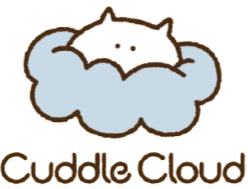Breed Showdown: Siberian Husky vs. Alaskan Malamute
Share
With their striking wolf-like appearance, piercing eyes, and northern heritage, the Siberian Husky and the Alaskan Malamute are two of the most majestic breeds in the canine world. It's easy to mistake one for the other, but beneath their thick double coats lie two very distinct breeds, each sculpted by their environment for a different purpose. The Husky was built for speed; the Malamute for power. Understanding these core differences is crucial for anyone considering bringing one of these formidable arctic dogs into their home.
At a Glance: How Do These Arctic Breeds Stack Up?
While they may share a similar look, their purpose, size, and temperament are worlds apart. Let's break down the key distinctions.
| Feature | Siberian Husky | Alaskan Malamute |
|---|---|---|
| Primary Purpose | Pulling light loads quickly over long distances | Hauling heavy freight over long distances at a steady pace |
| Size | Smaller & Lighter | Larger & Heavier |
| Height | 20-23 inches | 23-25 inches |
| Weight | 35-60 pounds | 75-100+ pounds |
| Energy Style | High-energy, "hyper," needs to run | Powerful, less "hyper," needs strength-based work |
| Temperament | Playful, mischievous, social, outgoing | Loyal, protective, dignified, requires strong leadership |
| Grooming | Medium-length coat, weekly brushing | Thicker, longer coat, daily brushing recommended |
| Climate Adaptability | Adapts better to warmer climates | Prone to overheating due to heavier coat |
Energy and Exercise: Runner vs. Weightlifter
Both breeds are high-energy and require significant daily exercise, but the type of exercise they need is different.
- Siberian Husky: Think of the Husky as a marathon runner. They are built for endurance and speed. They need to run. A short walk on a leash will not cut it. They thrive on activities like long runs with their owner, extensive hikes, or vigorous play in a large, securely fenced area.
- Alaskan Malamute: The Malamute is the weightlifter of the dog world. Bred for power and strength, they excel at strength-oriented tasks. They love activities like pulling a cart or sled (urban mushing), swimming, or hiking with a weighted doggy backpack.
A critical warning for both breeds: An under-exercised Husky or Malamute will become bored, anxious, and highly destructive. They will find their own ways to burn energy, which often involves redesigning your furniture and landscaping.

Temperament and Trainability: Independent Thinkers
Both breeds are highly intelligent, but their intelligence is paired with a stubborn, independent streak born from their history of working and making decisions far from their handlers. They are not recommended for novice owners.
- The Social Husky: Huskies are generally more outgoing, social, and playful. They are known for their mischievous nature and can be incredible escape artists. Their intelligence often leads them to disobey commands they find pointless or boring. They are typically friendly with strangers.
- The Loyal Malamute: Malamutes tend to be more dignified, reserved, and territorial. They form a deep, loyal bond with their family but can be wary of strangers. Their inherent "alpha" nature demands a firm, confident, and consistent leader who can establish clear boundaries.
Which Breed Is Right for You?
The choice between a Husky and a Malamute comes down to your lifestyle and what you're looking for in a canine partner.
- Choose a Siberian Husky if: You are a runner or avid hiker looking for a high-energy partner. You appreciate a playful, social, and sometimes mischievous personality and have a very secure fence.
- Choose an Alaskan Malamute if: You want a powerful, loyal, and more protective companion for strength-based activities like pulling or backpacking. You are a confident and experienced dog owner who can provide strong leadership for a dominant breed.
Both breeds are magnificent, but they require a serious commitment to exercise, training, and management. Choosing the right one ensures a rewarding relationship with these incredible arctic athletes.
